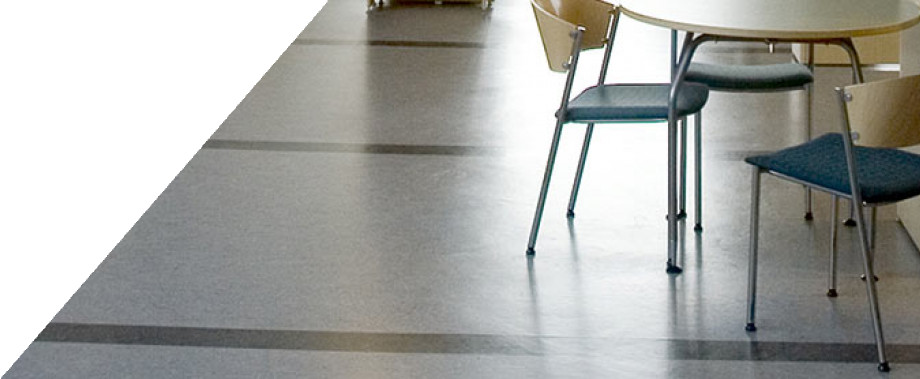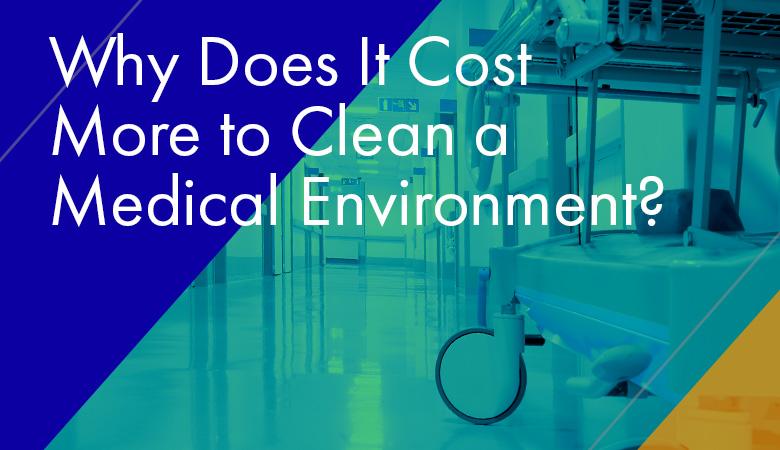Why Does It Cost More to Clean a Medical Environment?
We’re often asked why it costs more to clean a medical office building or health care facility. Why should one space cost more to clean than another? Isn’t cleaning, just cleaning? The answer is no. Here’s why:
Medical environments require specially trained cleaning crews to do the job properly. Sanitation needs for medical buildings and health care facilities are entirely different and more complex than conventional offices.
- “Terminal cleaning” is defined as a “method used in health care environments to control the spread of infections.” Cleaners must know and thoroughly understand the critical nature of this extraordinary health care surface disinfection in order to prevent the spread of viruses and bacteria through cross-contamination.
- They must use hospital-approved chemicals.
- They must understand how to clean around expensive medical equipment without damaging it.
- They must have medical awareness training that focuses on safety when working around sharp medical objects and tools.
- They must understand the cleaning specifications for different medical practices; pediatrician offices will have different cleaning needs than dentist offices.
- They must understand the proper disposal and cleanup of areas with hazardous materials, including bloodborne pathogens.
- They must be familiar with the requirements of HIPPA, OSHA and other regulatory issues.
Medical environments typically require additional day staff to maintain a superior level of cleanliness. Because of the extra work involved and stricter guidelines to follow when cleaning a medical environment, extra day staff is often required. What are some of these extra tasks?
- Patient restrooms need to be serviced during the day, in addition to common restrooms.
- Trash in exam rooms need to be emptied throughout the day.
- Periodic biohazard runs are typical in laboratory environments.
- Procedures and equipment for cleaning and sanitizing surgery room areas are highly specialized and detailed, including daily washing and disinfecting of walls, floors, even ceilings.
Medical environments take longer to clean. Medical offices typically take an hour to clean 2000 to 2500 square feet, compared to 5000 to 6000 square feet per hour for a standard office space. Why is this?
- All high-touch areas in a medical environment, such as tabletops, bedside tables, phone and cradle, armchairs, door and cabinet handles, light switches, closet handles, toilets, sinks and faucets need to be disinfected daily.
- Bacteria, such as Clostridium difficile (C. diff), Methicillin-Resistant Staphylococcus Aurea (MRSA), Norovirus and other Hospital Acquired Illnesses (HAIs) are common in medical facilities and cleaners will need to build in time to allow for proper dwell time to eliminate this type of bacteria.
- Personal protective equipment, such as gloves, masks and gowns, need to be worn and changed when cleaning rooms where surfaces may be contaminated. This protocol adds time and cost to daily tasks.
As a facility manager, cost savings are always a consideration, but should not be the only factor when choosing a cleaning team for your health care environment. Patient safety and your facility’s reputation are crucial. Hiring a cleaning company that is less expensive but unprepared for the rigors and requirements of cleaning a medical environment is a mistake. Spray and wipe is not an option with medical offices, hospitals and other health care facilities. Finding a janitorial company capable of maintaining the highest standards of cleanliness in these high-risk environments is worth the extra time and cost and will create real value for your facility.
At 4M, we always take into consideration each individual client’s needs and make sure each of our Team Members is fully prepared and trained to clean each facility properly, no matter what kind of facility it is. It’s just another way we deliver the best, innovative, safe and sustainable cleaning and service solutions for your business. To learn more, give us a call or CLICK HERE to contact us.


